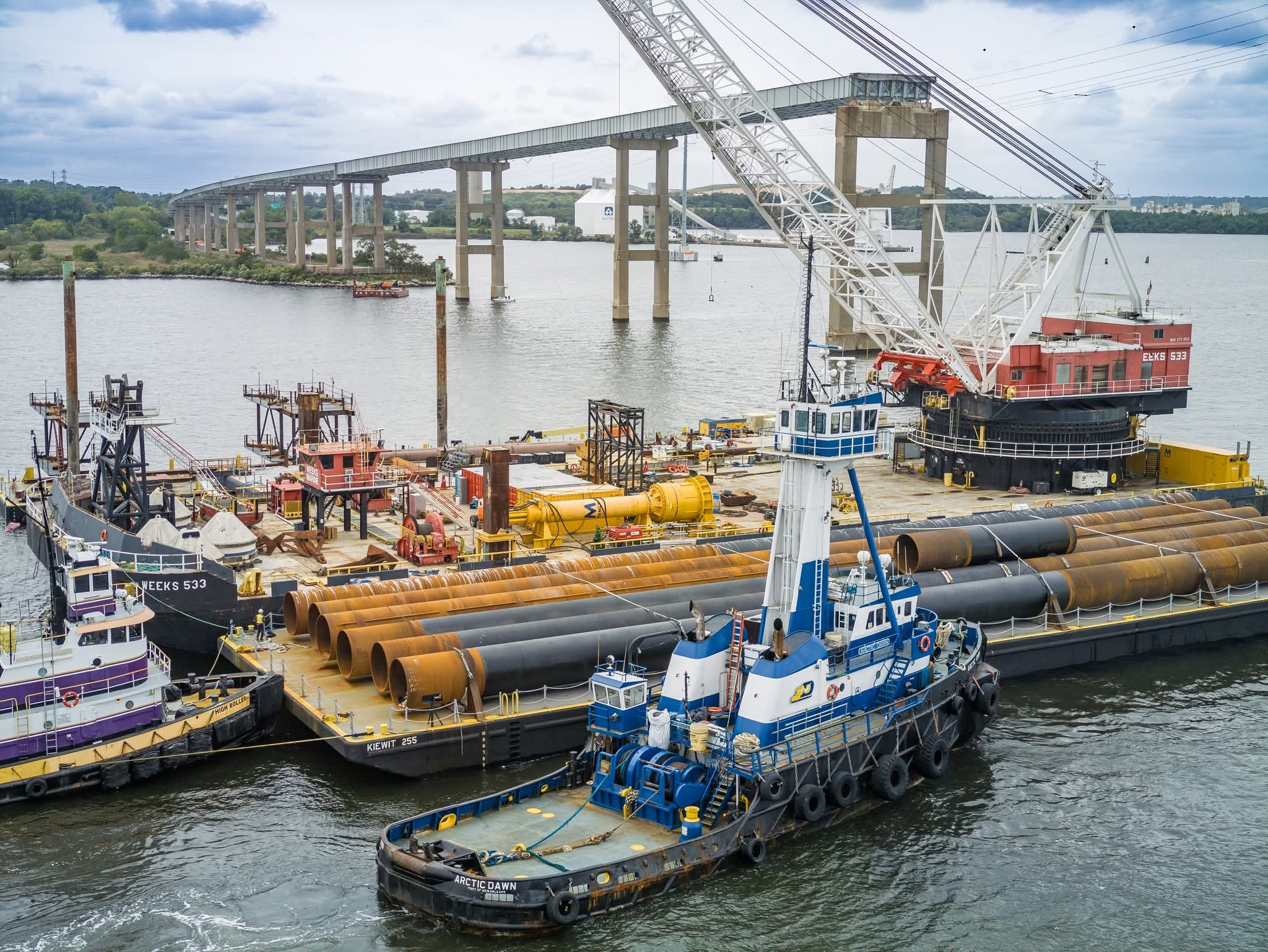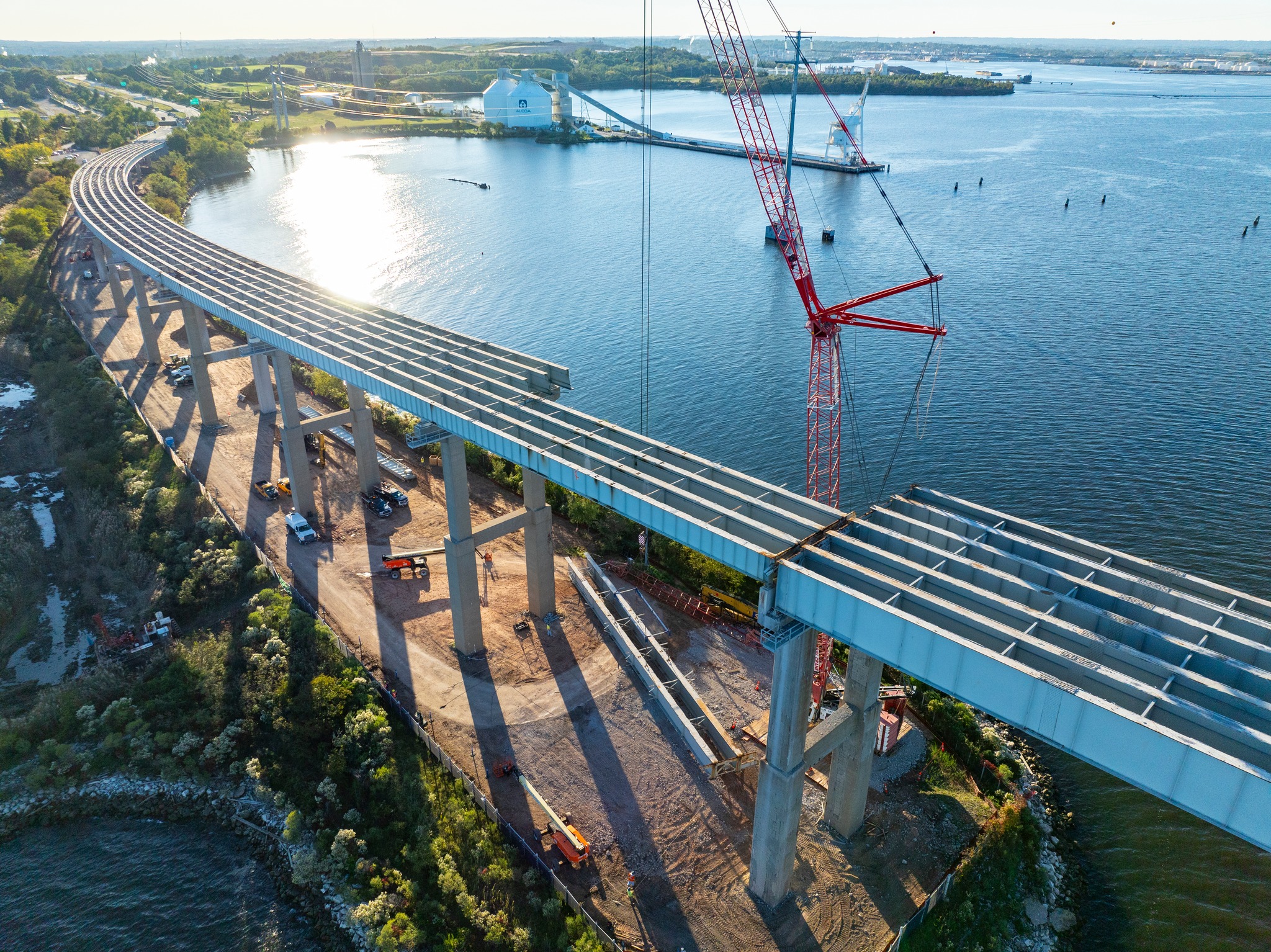–photo courtesy of MDTA–
Maryland Transportation Authority announced progress continues for the Key Bridge rebuiild as Test Pile arrived at the rebuild site last week. Here is the offical release from MDTA
The Maryland Transportation Authority (MDTA) announced the Test Pile Program for the rebuilding of the Francis Scott Key Bridge is expected to begin on or about Sept. 27, weather permitting.
Six test piles have arrived in Baltimore via barge. The test piles were fabricated with American-made steel, are eight feet in diameter and more than 220 feet in length.
“The Test Pile Program marks another major milestone in the Key Bridge Rebuild project,” said MDTA Executive Director Bruce Gartner.
“Some of the test piles will be evaluated for the potential to be incorporated into the permanent foundations for the new bridge.”
Test Pile Program Sequence
• The piles will be lifted into position using a crane and tripping barge.
• The piles will be placed in a template and stabilized with a vibratory hammer.
• The piles will be driven into the riverbed with a hydraulic hammer.
• The load frame will be placed on the six piles and exert vertical and horizontal pressure.
• The equipment and piles are equipped with instruments which will report out data to ensure the design models are accurate.
What Nearby Communities Should Expect During the Test Pile Program
Over the course of 6-8 weeks, twelve test piles will be driven into the riverbed. Two piles will be driven per week, each pile is expected to be hammered for approximately two hours, sounding similar to a large bell in the distance. Construction activity will typically occur Monday through Saturday during daylight hours within a 12-hour window.
Noise and vibration monitors were installed around the project area and surrounding communities which have been collecting baseline data prior to the start of demolition, the test pile program and construction. The monitors will provide the team with real-time data which will be compared against the baseline data to ensure pre-construction and construction activities stay within acceptable limits.
For more information, go to the Key Bridge Rebuild website.



